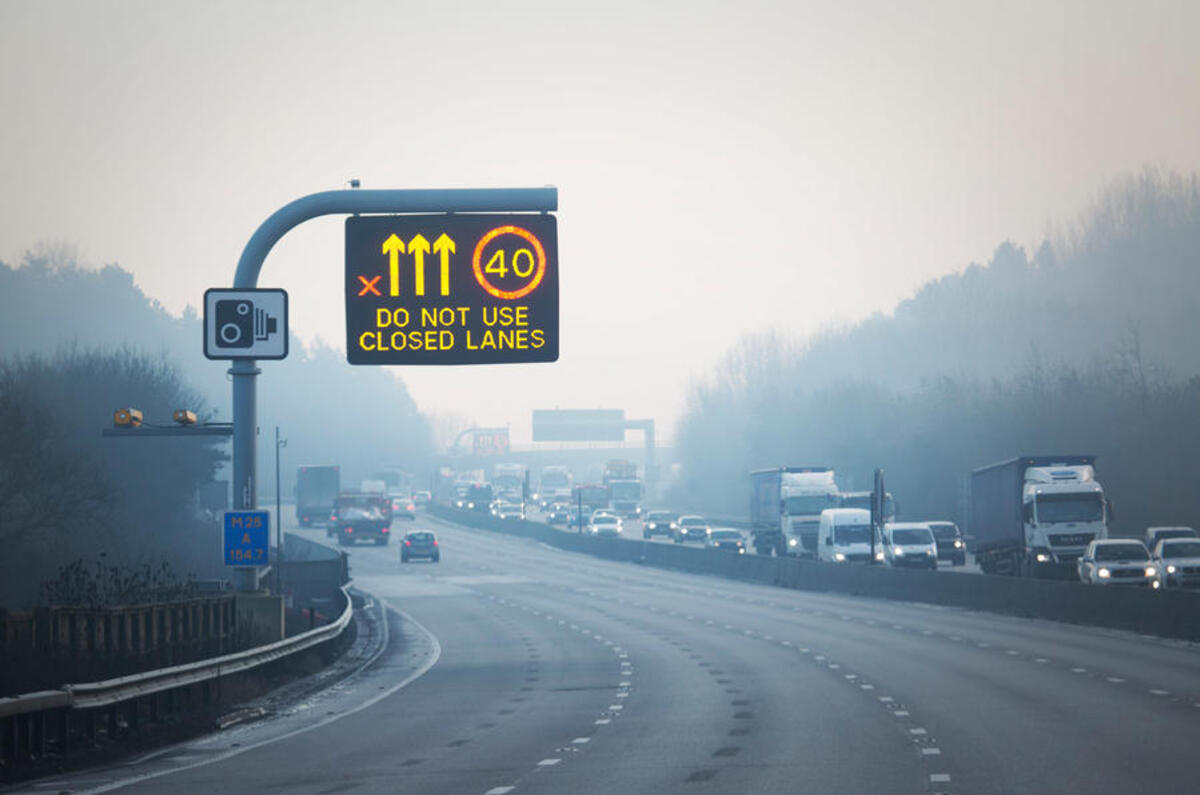An alarming investigation by The Telegraph last month revealed that staff working at National Highways had christened the computer systems controlling smart motorways ‘Die Now’ after they crashed three times in four days.
And now a Daily Mail reporter has spent six weeks undercover at a Highways England control station operating the cameras, where a series of shocking discoveries included the revelation that more than one in 10 of the CCTV cameras tracking the road were either broken or pointing in the wrong direction, including into fields and the sky.
Both investigations made for a pretty sobering read, and any remaining confidence a reader might have in the ‘smart’ bit of smart motorways - ie. the technology that instantly detects the need to close a lane when a vehicle becomes stranded in the absence of a hard shoulder - would have been eradicated.
Not fit for purpose, then, the technology that is supposed to keep you safe and save your life.
An official government review in the spring concluded that smart motorways were safer than conventional ones and their rollout would continue, but not before new radar detection technology was installed to live monitor lanes to improve the safety and effectiveness (although nothing on the software controlling them or the failing CCTV cameras relaying the images on which life or death decisions are made).
That sounds much more akin to smart motorways when they were originally trialled in the M42 in the early-2000s, where sensors helped trigger lower speed limits if they detected traffic slowing down and the emergency refuge areas were much closer together.
The watered-down versions that followed and have spread across the country have already lost in the court of public opinion, as an RAC study earlier this month found that 62% of drivers wanted them scrapped entirely and just 15% felt the improved safety measures were adequate to replace a hard shoulder.
The cost of converting an existing hard shoulder is £5-15 million per mile compared with the £75m per mile cost of building a new lane. Which probably - and chillingly, with lives at stake - tells you all you need to know on why the government presses on with them when all common sense suggests otherwise.




Join the debate
Add your comment
You can't make it up how hopeless these lethal abominations are.
In addition to all the other reasons that smart motorways are lethal, I've seen accidents caused by sudden, incorrect instructions or unwarranted lane closure signals that turned out to be nothing. You see it so often you convince yourself that either someone is mucking about or they are doing it to trigger the cameras into issuing a few fines.
Yet despite all the deaths, accidents, public opinion and stories like this, the smart (or is that 'shart') motorway work continues to inconvenience users of the M27 as work presses on regardless - maybe someone somewhere is not too eager to miss out on a big payday for the work to be completed rather than letting common sense and a regard for life take precedent.
The biggest danger that rarely gets a mention is the reduction in running lane width. Many of these are barely bigger than a HGV now.
Reading what's being said here, I'd be inclined to use A' roads , two way traffic,60mph, less stressful etc, may take longer, but you aren't constantly on the look out for cameras and reading illuminated signs to see what they say which are a distraction anyway, and your journey will be more enjoyable.
I agree whole heartedly: motorways are now for me routes of very last resort. Heads should roll over this and those responsible made to feel the guilt of the deaths they have caused or even prosecuted. It is however just symptomatic of how we put naive blind faith in electronic technologies generally, including the rubbish we have to put up with in our new cars as well.